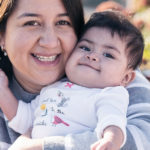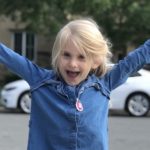Wanting to give back, four heart patients now work as heart pros
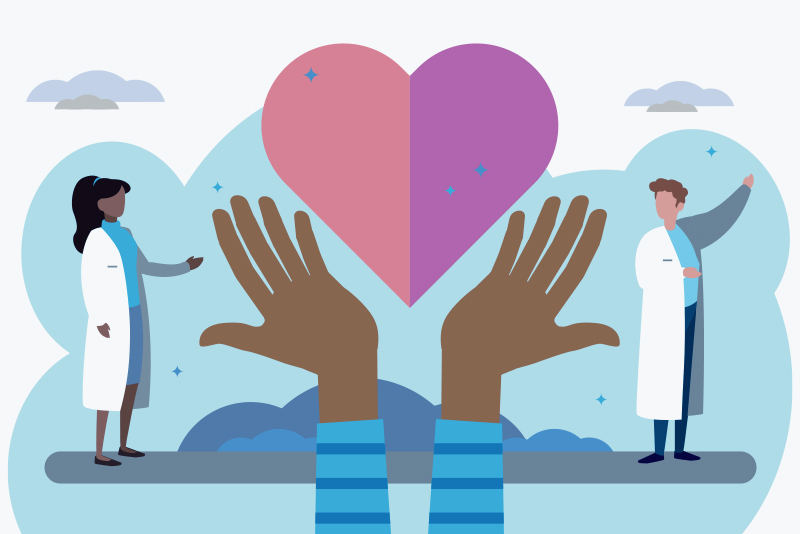
They belong to a unique group.
As children, they needed surgery to repair congenital heart conditions. Rather than being afraid, they instead were curious about the science behind their treatment. What they learned motivated them to discover more and ultimately pursue careers in medicine.
Now healthy adults and working for the Benderson Family Heart Center at Boston Children’s Hospital, they help children so they, in turn, can chase their own dreams. To celebrate National Heart Month, meet four heart patients turned heart professionals.
Catherine Allan
Former medical director of the hospital’s Cardiac Intensive Care Unit, Dr. Catherine Allan remembers how tetralogy of Fallot made her tire easily and limited her early childhood. After two surgeries when she was 8 and 9, she suddenly could “do everything I wanted to do.” She competed as an equestrian and finally had the stamina to thrive academically.
Although she was always interested in science, she developed a “laser-focused” interest in pediatric cardiology thanks to the compassion and commitment of the doctors and nurses who treated her. Working rotations in an ICU — while studying at University of California, San Francisco, School of Medicine — led to an interest in pediatric cardiac intensive care. “You have to make rapid decisions in an emergency situation, but you’re also often caring for those children for weeks and longer. You form relationships with kids and their families, and I appreciate that.”

Dr. Allan was also associate program director of the Simulator Program, which allows teams to practice emergency scenarios and allows colleagues to make first-hand observations that can improve the systems and environments that support patient care. It’s one of many innovations she embraced during her more than 20 years at Boston Children’s.
“It used to be that when we would follow patient outcomes, the focus was initially on surgery. But with all the advancements we’ve incorporated into cardiology and surgery, we’re now also thinking about outcomes beyond that — to patients leading full lives.”
That’s something Dr. Allan values. Seeing reminders about National Heart Month, in fact, prompts her to reflect on how far she’s come. “I realize how lucky I am to be able to live this full, rich life with congenital heart disease, but also how important it is to think about CHD and continue to take care of myself.”
Lindsey Reynolds
Diagnosed with atrial septal defect as an infant, Lindsey Reynolds felt lucky that she faced no physical restrictions growing up. But when she turned 16, she had to pause a successful run as a lacrosse player to have corrective surgery at Boston Children’s. Her heart had finally matured, allowing a hole in the heart wall to be properly patched.
Eight years later, she often sees the name of her surgeon, Dr. Christopher Baird, in her work as a clinical research assistant in Boston Children’s Department of Cardiology. She reads operation notes from Dr. Baird and other clinicians, along with research and other information, to find quantitative data points that can improve patient care.
For instance, she’s helping Dr. David Brown study a select group of patients to see how the right side of the heart changes after a pulmonary valve replacement. She also works with Dr. Naomi Gauthier, director of Boston Children’s Cardiac Fitness Program, on an initiative that supports the exercise goals of children with CHD.
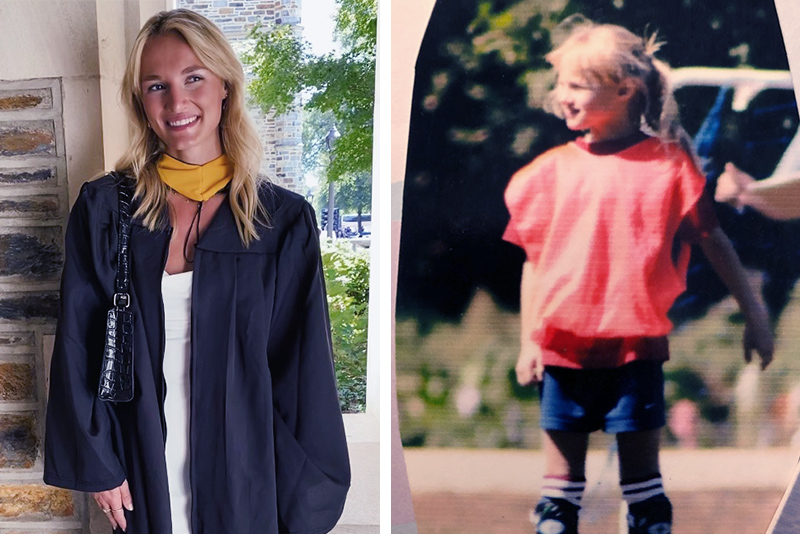
Reynolds appreciates the importance of exercise after cardiac surgery. She delayed committing to Duke University and its lacrosse program until she was confident she had recovered from her procedure. It didn’t take long, and she went on to play four seasons as a midfielder for the Blue Devils, graduating in 2020 with honors.
She intends to apply to medical schools in the spring, keeping her options open but mindful of the joy she finds in pediatric medicine. No matter what, she’s already following through on a dream that hatched in middle school, when she was a “science nerd” who showed her echocardiograms to classmates. “I thought they were the coolest thing ever.”
Emily Eickhoff
Only two days old on April Fool’s Day 1993, Emily Eickhoff had surgery to repair truncus arteriosus, in which one artery, instead of two, carries blood from the heart. At the time, she was the youngest person in Boston Children’s long history to undergo the procedure.
Other than a follow-up surgery as a toddler to enlarge an artificial conduit that supports blood flow from the heart, and more recently a bioprosthetic valve placement, she has charged through life without hesitation. Not that she could have taken it easy with her twin sister, Leah, as a constant companion and competitor. “We played hard, studied hard, and pushed each other to be the best we could be all of our lives.”

Eickhoff aspired to pay forward the lifesaving care she received as an infant. While rowing four years on Tufts University’s women’s crew team, she earned her bachelor’s and master’s degrees in biomedical engineering. She eventually landed her current position on a team of engineers that solves clinical problems alongside the medical professionals at the Heart Center. Among many initiatives, she and her colleagues develop patient-specific digital 3D models to enhance the visualization of cardiac components so that clinicians can have a clearer understanding of patient cases.
“I feel so lucky to have been born at a time when medical innovations and surgical techniques had been developed, which gave me the opportunity to live. Open heart surgery is a relatively young discipline, and I was able to take advantage of those advancements when others previously couldn’t. At the core of my motivation for the work I do is the knowledge that I am making a difference for babies born with a ‘special heart’ like me.”
Katherine Kohlsaat
Diagnosed with four congenital heart conditions before birth, Katherine Kohlsaat had three surgeries at Boston Children’s before turning 2. The scar on her chest is her connection to that time. “I never try to hide it.” The mark symbolizes her fascination with how the heart works and her desire to have a role in treating children like her.
“I was a kid who loved going to my cardio appointments. I looked forward to my echocardiograms and asking questions. It fascinated me.”
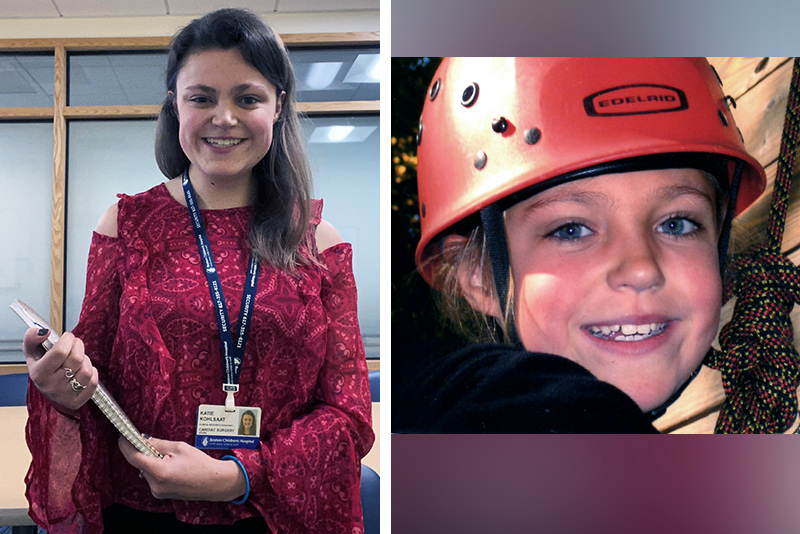
Now a recent graduate of the University of Rhode Island, where she majored in molecular biology, she continues to seek answers as a clinical research assistant for Boston Children’s Department of Cardiac Surgery. She is helping build case studies that aim to improve cardiac surgeries so that patients won’t need a duplicate procedure later in life.
Kohlsaat realized the extent of support for those with CHD when she was 10. That year, she attended Camp Meridian, a retreat for children with heart conditions that was founded by Dr. Gauthier, and has never missed a session. Since college, she has served as a camp counselor. Her leadership role at the camp and her research work confirmed a growing feeling that she should pursue a career in pediatric cardiology. She hopes to soon start classes to become a physician assistant.
Kohlsaat returned to Boston Children’s as a patient in 2019 to have a pacemaker installed. “It was a little gut-check that this is not all smooth sailing.” As always, she can turn to her brother, Declan, who also has CHD, for support. She, in turn, will tell children with heart conditions to “take it one day at a time. You are stronger and more capable than you think right now.”
Learn more about the Benderson Family Heart Center
Related Posts :
-

Letters from the heart: “Life will be better”
Children with congenital heart disease (CHD) have much to think about as they undergo tests, try medications, and face possible ...
-

Saving baby Marcela: A mother’s mission to finally hold her daughter
The translations of this page are translated from English into another language using Google Translate, a third party tool. Please ...
-

After four unsuccessful heart surgeries, Nicholas finds hope
When Brenna and Lorenzo Degano arrived in Boston with their son, Nicholas, last April, it was with a feeling of ...
-

A biventricular repair helps California girl thrive
Even before their daughter, Elyse, was born, Amanda and Ian Primavera knew their road would be a little rocky. But ...



